The mesmerizing beauty of ring systems is one of the most striking features in our solar system, especially when considering the gas giants. Among them, the competition for the title of the most extensive ring system reveals fascinating details about planetary formation and cosmic dynamics. This blog post will explore the intricate details of each gas giant’s rings, analyzing their origins, structures, and the unique characteristics that set them apart.
As we delve into the ringed planets, we will uncover more about their majestic and diverse ring systems, shining a light on not only their grandeur but also on how these massive gas giants interact with their celestial rings. From the stunning structures of Saturn’s rings to the faint haunts surrounding Jupiter, each gas giant tells a captivating story through its ring system.
Ready your telescopes and join me on an enlightening journey as we unravel the secrets behind these cosmic wonders.
Jupiter’s Rings: A Glimpse into the Faint Mysteries
Jupiter, the largest planet in our solar system, possesses an intriguing ring system, although not as visually stunning as its counterparts. Its rings were first discovered in 1979 during the Voyager 1 mission. The system consists of four primary components, including a halo ring, a thin main ring, and two gossamer rings named after the moons Amalthea and Thebe.
Data obtained from NASA’s Galileo spacecraft confirmed that these faint rings were created by meteoroid impacts on small moons. As dust from these collisions spread outward and became gravitationally bound to the planet, it formed the ring structure we observe today. Interestingly, Jupiter’s gravitational forces pose a threat to the persistence of its rings, as they are gradually being eroded over time due to the planet’s immense gravity.
Even though Jupiter’s rings are not as spectacular, they hint at a much deeper and more complex interplay of forces at work in the cosmos. This dynamic fit within the wider context of our solar system is a reminder of the mysteries that lie just beyond our vision.
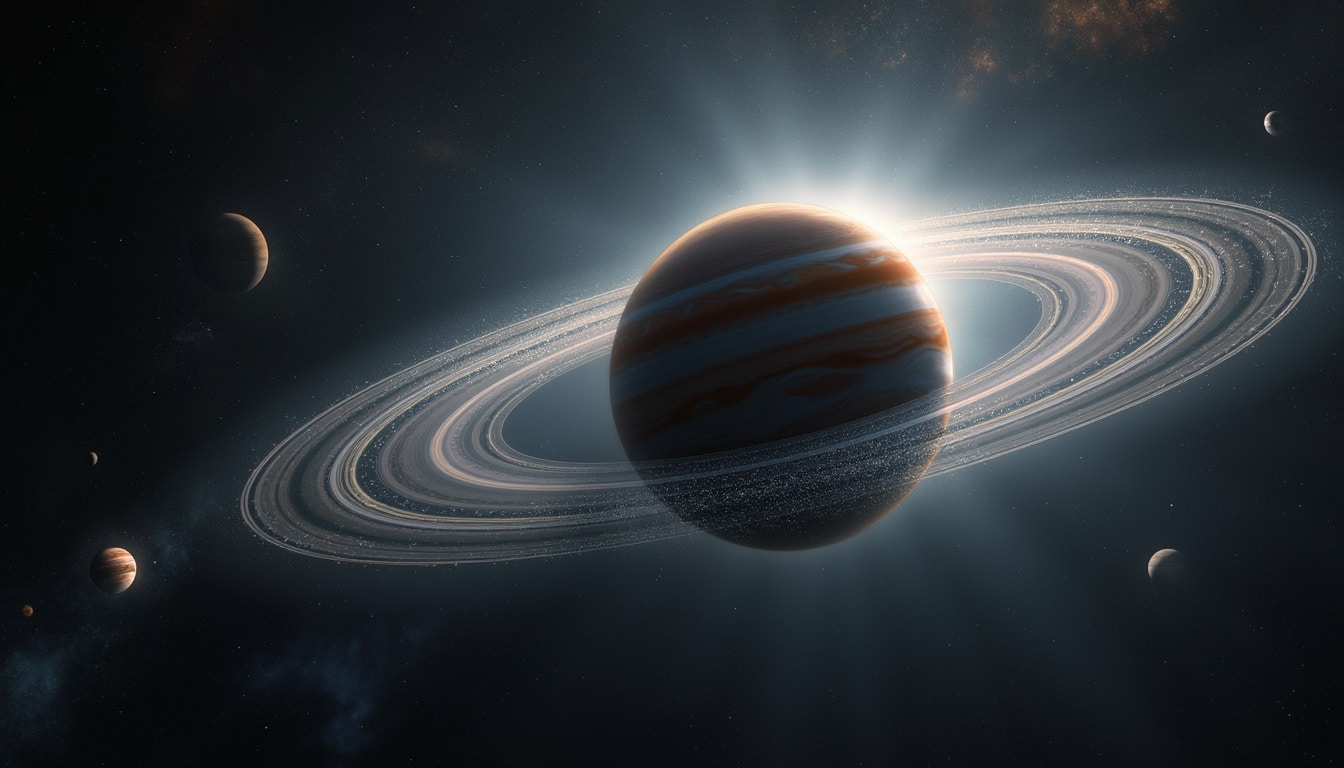
Understanding the Composition of Jupiter’s Rings
The composition of Jupiter’s rings primarily consists of dust particles and small rocks. These materials are the remnants of celestial bodies that have succumbed to gravitational forces and impacts over time. Unlike Saturn’s brilliant ice particles, Jupiter’s rings are made up of much darker materials that do not reflect light effectively, making them harder to observe.
The ring system is dynamic, constantly interacting with the nearby moons, which serve as ‘shepherds.’ These moons help maintain the structure of the rings by exerting gravitational forces. The interplay of these forces creates areas of fluctuation within the ring system, leading to ring arcs and variations in density.
Saturn’s Rings: The Crown Jewel of the Gas Giants
When most people think of planetary rings, Saturn immediately comes to mind. Renowned for its magnificent ring system, Saturn stands out as having the largest and most visible rings in the solar system. Composed primarily of ice particles, along with rocky debris and dust, Saturn’s rings have become iconic. The system consists of several distinct bands, including the A, B, and C rings, which together create an awe-inspiring tapestry of cosmic beauty.
Saturn’s rings are not only stunning but they also exhibit a level of complexity that is intriguing to astronomers. These rings extend outward for thousands of kilometers, with some regions displaying remarkable structures that researchers continue to study closely. The gravitational influence of Saturn’s moons plays a vital role in sculpting these rings, creating gaps and waves that add to the visual splendor.
Visitors equipped with a small telescope can catch a glimpse of this celestial wonder throughout most of the year, though it shines brightest during its opposition in late summer. Observing Saturn’s rings provides an opportunity to appreciate the dynamic processes that shape our solar system.
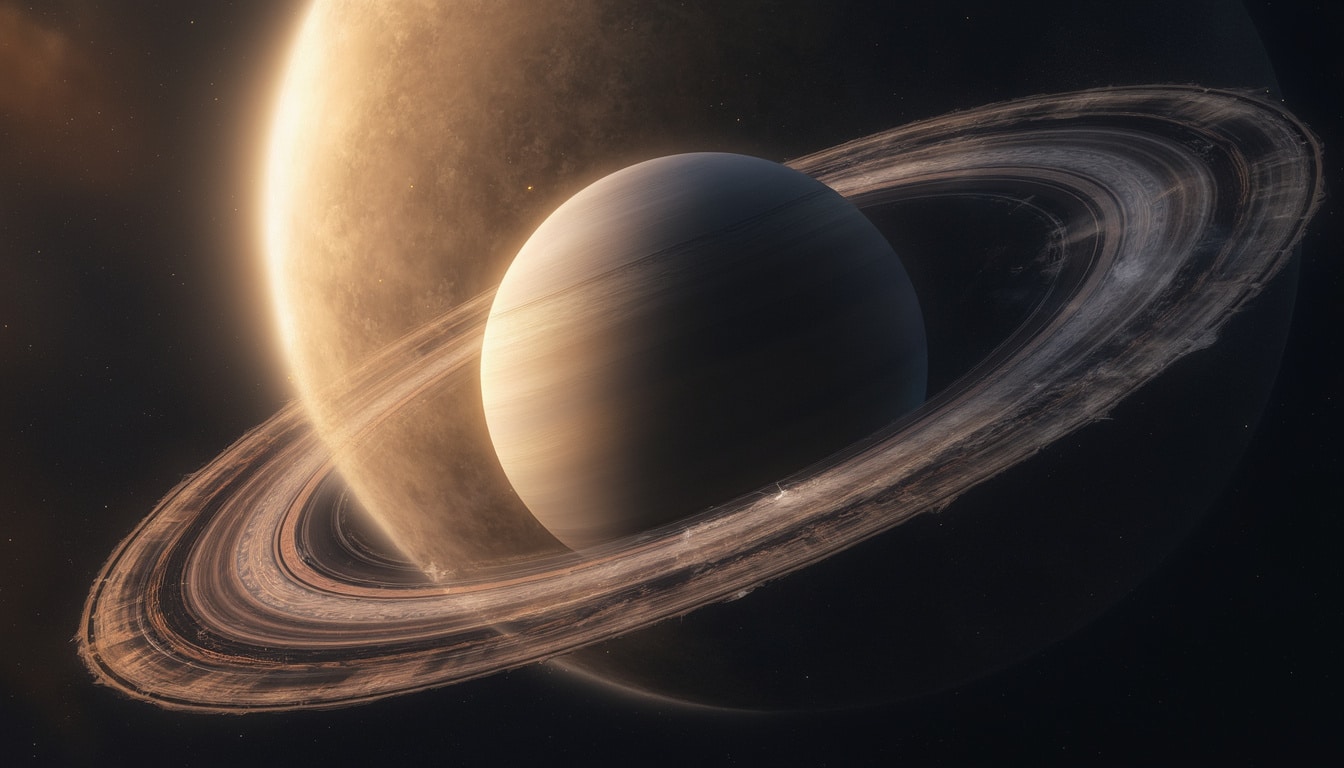
The Science Behind Saturn’s Rings
Understanding the origin and formation of Saturn’s rings provides valuable insight into not only the planet itself but also the history of our solar system. Current research indicates that Saturn’s rings may have formed from the remnants of moons that were torn apart by the planet’s gravitational forces. Alternatively, these rings could be remnants of ancient comets that were captured by Saturn’s strong gravity.
The rings’ icy particles are continuously bombarded by micrometeorites, causing them to break apart and replenish the system over time. This ongoing cycle contributes to the dynamic nature of the rings and adds layers of complexity for researchers delving into planetary ring dynamics.
Uranus’ Rings: The Underrated Beauties
Uranus’ rings are often overshadowed by those of Jupiter and Saturn. Discovered in 1977, the ring system around Uranus comprises 13 distinct rings made up of dark materials, primarily composed of ice particles mixed with dust. Unlike Saturn’s bright icy rings, those of Uranus are much fainter and harder to detect. These rings were revealed thanks to advancements in telescope technology and were captured in more detail by the Hubble Space Telescope.
The rings are quite complex, revealing a mix of density and structure shaped by interactions with Uranus’ moons. For instance, the moon Miranda plays an essential role in maintaining some of the ring arcs found within the system. These arcs consist of darker, denser materials compared to surrounding ring areas, creating a fascinating visual contrast.
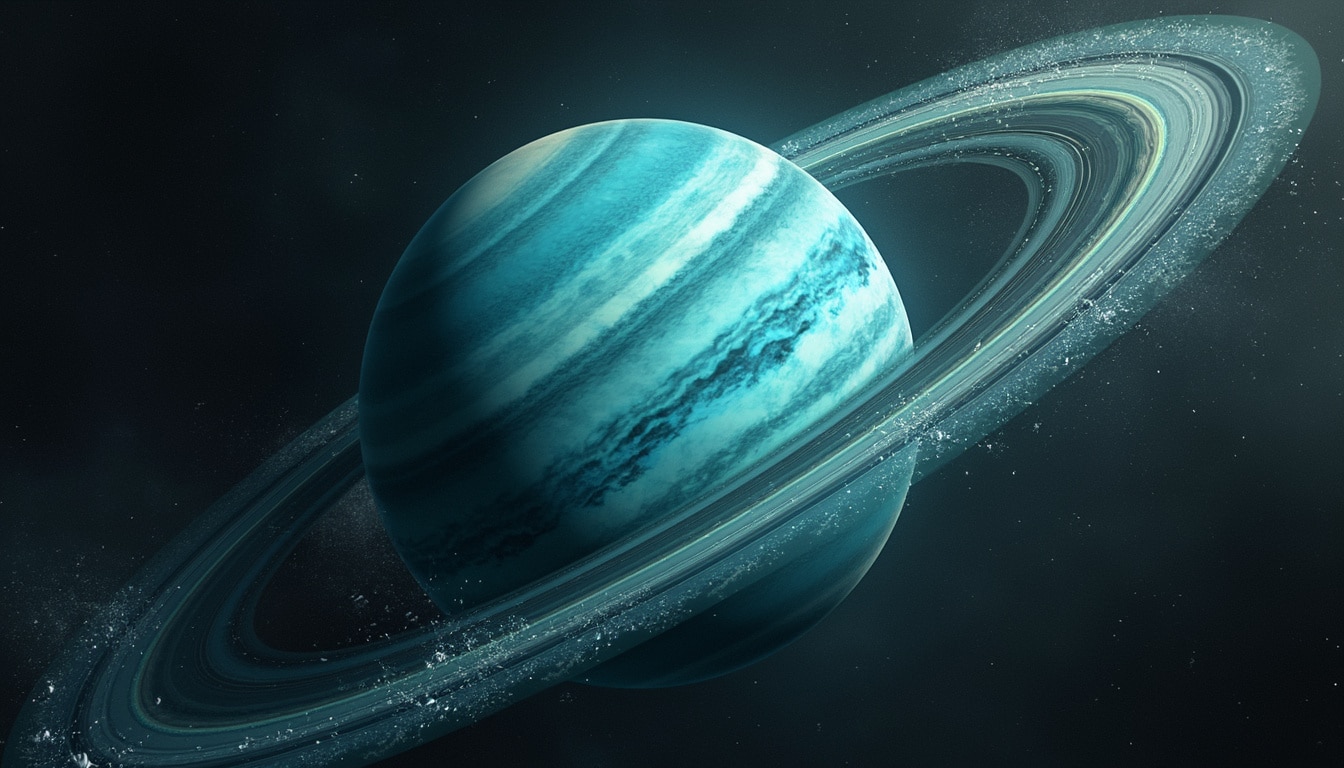
Characterizing Uranus’ Rings
The rings of Uranus differ from those of Jupiter and Saturn, with a peculiar chemical composition and structure. The darker materials are believed to contain organic compounds that might stem from the planet’s odd dynamics and environmental interactions. The presence of these materials highlights the complexity of Uranus’ comparatively recent discovery among the ringed giants.
Despite being less visually striking than Saturn’s rings, they present a unique opportunity for researchers to understand the conditions surrounding their formation. Studying Uranus’ rings sheds light on the chaotic history of this distant planet and its place in the solar system.
Neptune’s Rings: A Faint Whisper in the Dark
Neptune, the furthest of the gas giants, also possesses a ring system, albeit less vibrant than Saturn’s. The first images of Neptune’s rings were collected by the Voyager 2 spacecraft in 1989, and they were later confirmed by more advanced telescopes. Like those of Uranus, Neptune’s rings are faint and composed primarily of ice particles and dust, showcasing their unique characteristics.
Neptune’s ring system features five main rings: Galle, Le Verrier, Lassell, Arago, and Adams, accompanied by four prominent ring arcs that display varying densities and structures. These arcs, often named after the French revolutionary principles of Liberté, Egalité, Fraternité, and Courage, add an element of intrigue to the otherwise faint ring system.
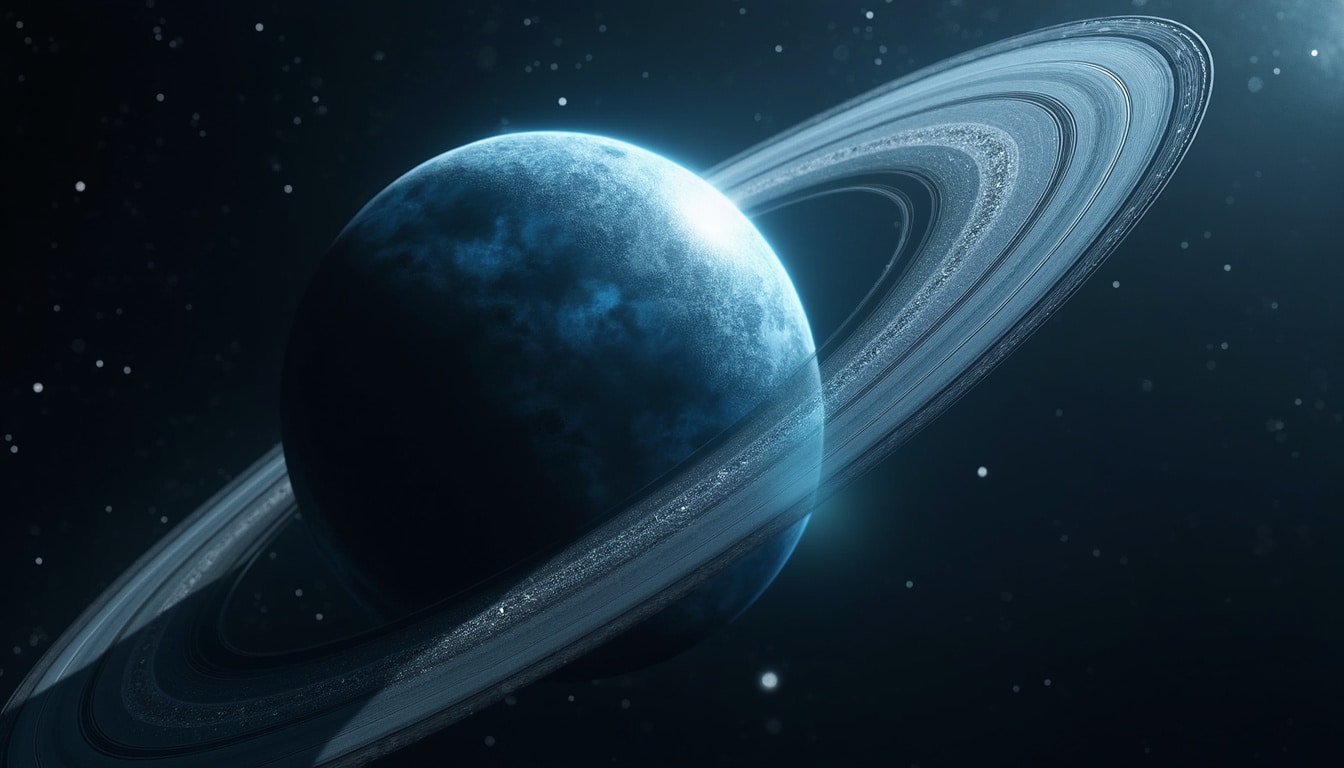
Neptune’s Dynamic Interaction with its Moons
Neptune’s rings are shaped and maintained by the planet’s four small moons, which exert gravitational forces that contribute to the structure and stability of the ring system. These moons shepherd the dust and ice particles, creating the dynamic environment found within the rings.
However, much like the other gas giants, the longevity and integrity of Neptune’s rings face challenges due to gravitational interactions and cosmic processes. The faintness of its rings adds to the enigmatic charm of the planet, leaving astronomers yearning for further exploration and understanding.
Comparative Analysis of the Ring Systems
Among the gas giants – Jupiter, Saturn, Uranus, and Neptune – there is a significant difference in the visibility and structure of their rings. Saturn undoubtedly holds unrivaled glory with its expansive and distinguished ring system that makes it an observational gem.
Jupiter’s faint rings reveal a dynamic interplay between celestial bodies, while Uranus and Neptune provide insights into less-known ring characteristics. Collectively, these planets contribute to a greater understanding of the conditions surrounding ring formation within our solar system.
Recent discoveries have indicated that other celestial bodies, including minor planets and asteroids, also possess ring systems, showcasing the idea that the universe is replete with diverse structures and phenomena.
This exploratory endeavor serves as a reminder of the ongoing fascination that planets hold over humanity. While Saturn may reign supreme for its rings, the mysteries underlying the ring systems of Jupiter, Uranus, and Neptune continue to captivate astronomers and enthusiasts alike.
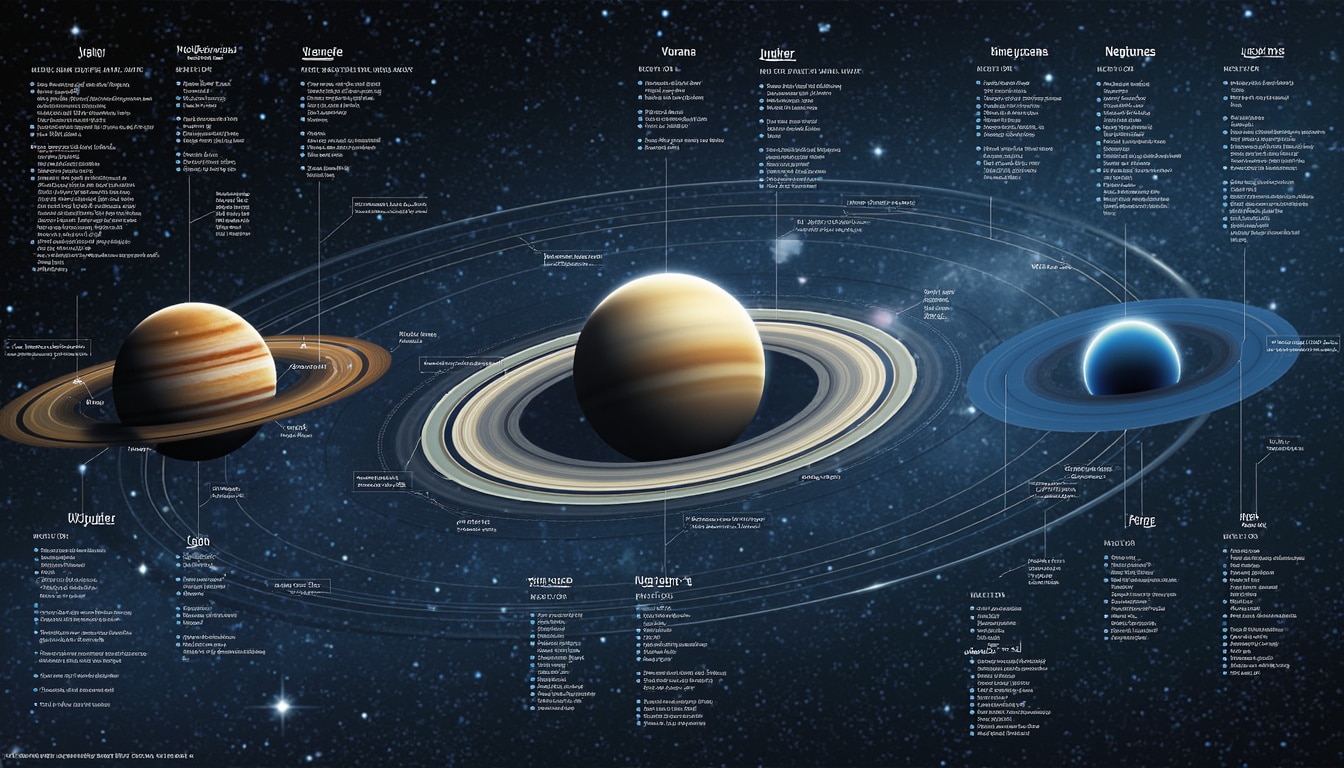




Leave a Reply